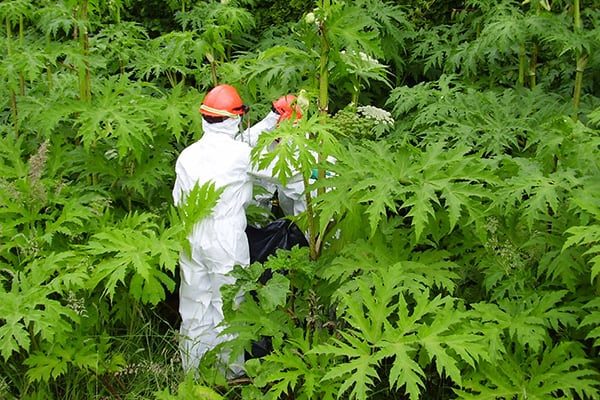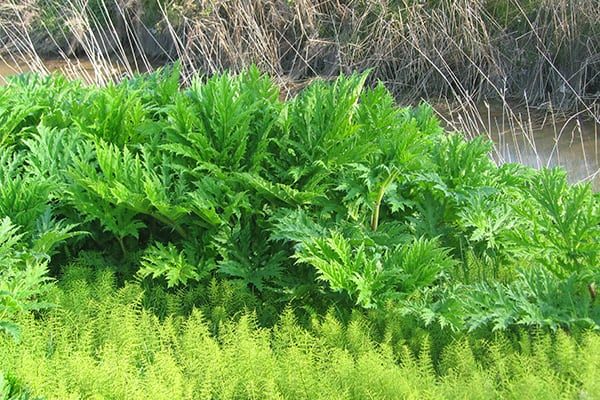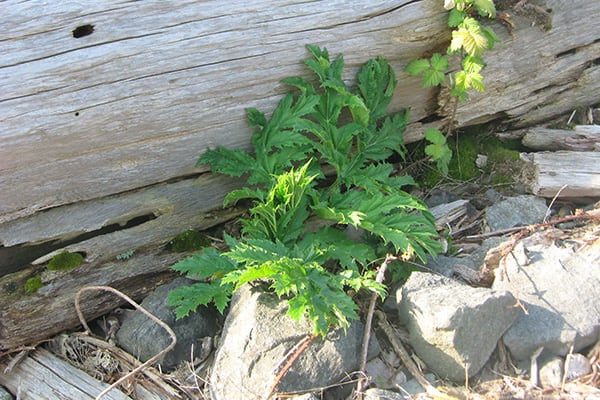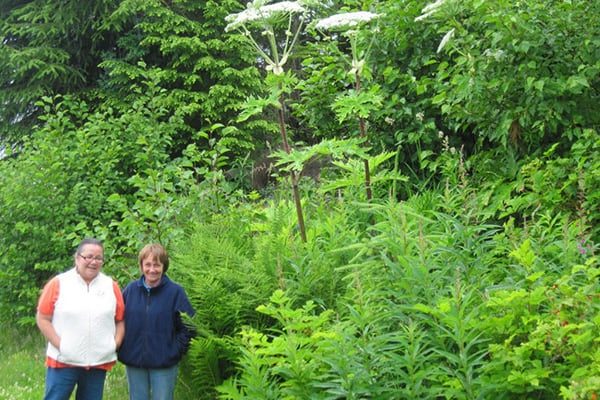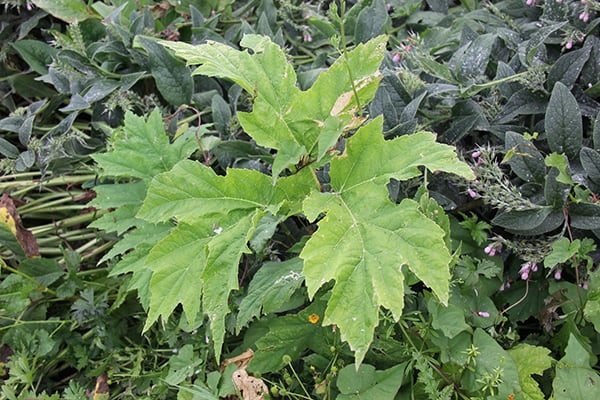Giant hogweed
Warning
Giant hogweed plants produce a highly toxic sap that can cause burns, blisters and scarring if you touch it. WorkSafeBC has issued a Toxic Plant Warning for Giant hogweed requiring workers to wear heavy, water-resistant gloves and water-resistant coveralls that completely cover skin while handling the plants. Eye protection is also recommended.
About This Species
Giant hogweed (Giant cow parsnip, Cartwheel flower) is an extremely toxic invasive plant with sap that will cause burns, blisters and scars when touched by bare skin. It is native to Europe and Asia and was likely introduced as an ornamental garden plant that has since escaped. It can be found in moist disturbed soils, or riparian areas such as streams. It can grow very quickly and dominate ravines and stream banks posing serious negative risks to human health and ecology. Each plant can produce 50–100,000 winged seeds that can float for up to three days. Giant hogweed is designated as a Provincial Noxious Weed by the BC Weed Control Act, as well as a Provincial Containment species by the BC Provincial Priority Invasive Species List.
How to Identify
Giant hogweed is easily differentiated from other species due to its unusually large size, growing up to 5 m tall. Stems are hairy, green with purple blotches, 5-10 cm in diameter.
Multiple umbrella-shaped clusters of white to light pink flowers can be up to 80 cm across on a single stem. Green oval fruits are about 4-10 mm in diameter and 6-8 mm wide. Seeds form in June and July turning dry and brown when ripe.
Leaves are dark green, coarsely toothed, deeply incised leaves. Leaves are alternate. The lower leaves are up to 3 m long and 1.7 m wide and coarsely toothed. Upper leaves on the flowering stem become smaller. The upper leaf surface is smooth, but the underside is covered in bristles
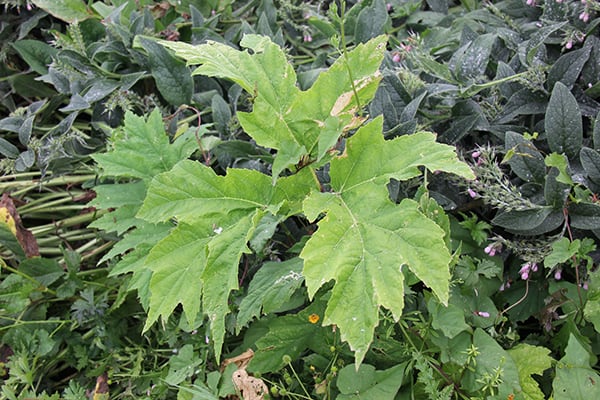
Take Action
Prevention is the best approach.
- Giant hogweed Factsheet PDF
-
If you need advice about invasive species on your property or you are concerned about reported invasives in your local area, contact your local government or regional invasive species organization.

PlayCleanGo
Learn about best practices

Plantwise
Learn about best practices
A few non-invasive alternatives to plant instead of Giant hogweed include:
- Blue elderberry (Sambucus cerulea)
- Ligularia (Ligularia dentata)
- Rodgersia (Rodgersia spp.)
- Shieldleaf rodgersia (Astilboides tabularis)
- Wild celery (Angelica spp.)
REPORT TO PROTECT BC’S BIODIVERSITY

Use the app
Observe and report to protect BC’s biodiversity

Report through this website
Use our form to tell us what you’re seeing and where.



